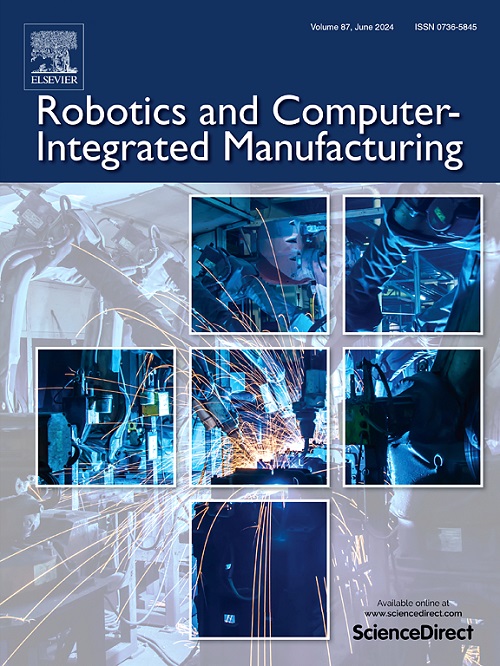Vision-based extraction of industrial information from legacy Programmable Logic Controllers
IF 11.4
1区 计算机科学
Q1 COMPUTER SCIENCE, INTERDISCIPLINARY APPLICATIONS
引用次数: 0
Abstract
Technological advancements in manufacturing are increasingly driven by connectivity and information that can be collected about manufacturing processes. Programmable Logic Controllers (PLCs) are a valuable source of process information which can help inform operations. However, many factories use legacy PLCs with restricted connection and data extraction capabilities. This paper presents a novel vision-based PLC monitoring method for extracting the input and output (I/O) states of a PLC in real time. Four case studies in industry and laboratory settings are presented; in each case study, vision-based PLC monitoring was used to extract I/O data successfully and provide data for applications such as operation monitoring, process monitoring, production counting and fault detection. Vision-based monitoring is evaluated and compared to other PLC monitoring methods using a set of key requirements. The vision-based monitoring method showed several improvements over existing PLC data extraction methods; these include no PLC control system interference, minimal disruption during installation, system security, and cost-effective design. This new vision-based PLC monitoring method has the potential to provide manufacturers with a method to retrofit PLCs to access new valuable sources of information that can be used to improve their operation or create a smart factory at a lower cost.
基于视觉的工业信息提取从传统的可编程逻辑控制器
制造业的技术进步越来越多地受到连接和可收集的有关制造过程的信息的推动。可编程逻辑控制器(plc)是过程信息的宝贵来源,可以帮助通知操作。然而,许多工厂使用具有受限连接和数据提取功能的传统plc。本文提出了一种新的基于视觉的PLC监控方法,用于实时提取PLC的输入和输出状态。在工业和实验室设置提出了四个案例研究;在每个案例研究中,基于视觉的PLC监控成功地提取了I/O数据,并为操作监控、过程监控、生产计数和故障检测等应用提供了数据。使用一组关键要求对基于视觉的监控进行评估并与其他PLC监控方法进行比较。与现有的PLC数据提取方法相比,基于视觉的监测方法有若干改进;其中包括无PLC控制系统干扰,安装期间的干扰最小,系统安全性和成本效益设计。这种新的基于视觉的PLC监控方法有可能为制造商提供一种改造PLC的方法,以访问新的有价值的信息源,这些信息源可用于改善其操作或以更低的成本创建智能工厂。
本文章由计算机程序翻译,如有差异,请以英文原文为准。
求助全文
约1分钟内获得全文
求助全文
来源期刊
CiteScore
24.10
自引率
13.50%
发文量
160
审稿时长
50 days
期刊介绍:
The journal, Robotics and Computer-Integrated Manufacturing, focuses on sharing research applications that contribute to the development of new or enhanced robotics, manufacturing technologies, and innovative manufacturing strategies that are relevant to industry. Papers that combine theory and experimental validation are preferred, while review papers on current robotics and manufacturing issues are also considered. However, papers on traditional machining processes, modeling and simulation, supply chain management, and resource optimization are generally not within the scope of the journal, as there are more appropriate journals for these topics. Similarly, papers that are overly theoretical or mathematical will be directed to other suitable journals. The journal welcomes original papers in areas such as industrial robotics, human-robot collaboration in manufacturing, cloud-based manufacturing, cyber-physical production systems, big data analytics in manufacturing, smart mechatronics, machine learning, adaptive and sustainable manufacturing, and other fields involving unique manufacturing technologies.

 求助内容:
求助内容: 应助结果提醒方式:
应助结果提醒方式:


